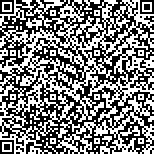下载中心
优秀审稿专家
优秀论文
相关链接
摘要

为了实现两个不同年份单时相遥感影像之间的土地覆盖变化检测,提出了一种基于土地覆盖类型特征自适应确定阈值的遥感影像变化检测方法。以2015年土地覆盖数据为基础,综合2013年和2015年Landsat 8-OLI影像数据,首先,采用时相不变点群法TIC(Temporally Invariant Cluster)保证了两期影像辐射水平的一致性。其次,对两期影像进行多尺度分割,并在各级尺度下构建分割对象的变化向量。然后,采用最大类间方差的方法分别进行单一变化阈值变化检测以及基于土地覆盖类型的多阈值变化检测分析,并利用目视解译样点进行精度验证与评价。结果表明:(1)单一阈值变化检测结果的总体精度为79.6%,Kappa系数为0.601,多阈值变化检测结果的总体精度为87.2%,Kappa系数为0.741,多阈值变化检测具有更高的精度。(2)进一步逐土地覆盖类型精度评价可知,多阈值变化检测能在一定程度上减弱物候期的影响,具有更高的稳定性。该研究以土地覆盖数据为底图,逐类别的选取变化检测阈值,提高了变化区域检测的精度,在大范围高效更新土地覆盖数据的应用中具有一定的参考价值。
Change detection with single-phase remote sensing image between two different times is widely used in land cover, urban expansion, coral reef health, forest fire events, and deforestation. The most important step in change detection is to determine the change threshold value, which is used to distinguish change and no-change areas. Traditional change detection methods usually determine only one threshold. These methods neglect the difference of spectral value range between different land cover types. Even the same land cover types may have great differences. For example, areas of farmland that have been harvested are different from areas that have not been harvested. Thus, we propose an adaptive multi-threshold value remote sensing image change detection method that is based on land cover type feature. Land cover data for 2015 and two Landsat 8 OLI images for 2013 and 2015 were collected. First, the method used Temporally Invariant Cluster (TIC) to ensure the consistency of the radiometric level of the two images. To avoid salt-and-pepper noise, we segmented the remote sensing image with multiscale segmentation algorithm. The segmentation spatial scales 200, 150, and 100 were used for different land cover types. Change vectors of the image objects at different segmentation spatial scales were then constructed. The maximum inter-class variance method is used to determine the change detection in single and multi-threshold values that are based on land cover types. Finally, we collected 500 samples by using visual interpretation and subsequently conducted accuracy assessment on the result of single and multi-threshold value change detection. The experiment outcomes showed that the multi-threshold value change detection method had higher accuracy and greater stability than the single threshold value change detection. The total accuracy of the multi threshold value change detection is 87.2%, whereas the total accuracy of the single threshold value change detection is 79.6%. The Kappa coefficient is 0.741 and 0.601, respectively. To compare the proposed multi- threshold values method with the traditional single threshold value method, we conducted further accuracy assessment with each land cover type. Results showed that the producer’s accuracy of the no-change area in farmland, water, as well as developed and barren land was improved. Similarly, the user’s accuracy of the change area in farmland and water was enhanced. The multi-threshold values change detection method weakened the influence of phenology phase to an extent and has better applicability. The TIC relative radiometric normalization method could overcome the shortcomings of traditional visual interpretation for selecting time-invariant pixels. The method avoids the influence of subject factors and can normalize images accurately and efficiently. In addition, the multiscale segmentation algorithm can provide different spatial segmentation scales to avoid over and under segmentation problems. The proposed method involves the change vector analysis driven by different thresholds based on land cover type rather than a single threshold value. The proposed method has improved the accuracy of the change detection and provided a reference for the application of efficiently updating of land cover data in large-scale area.

